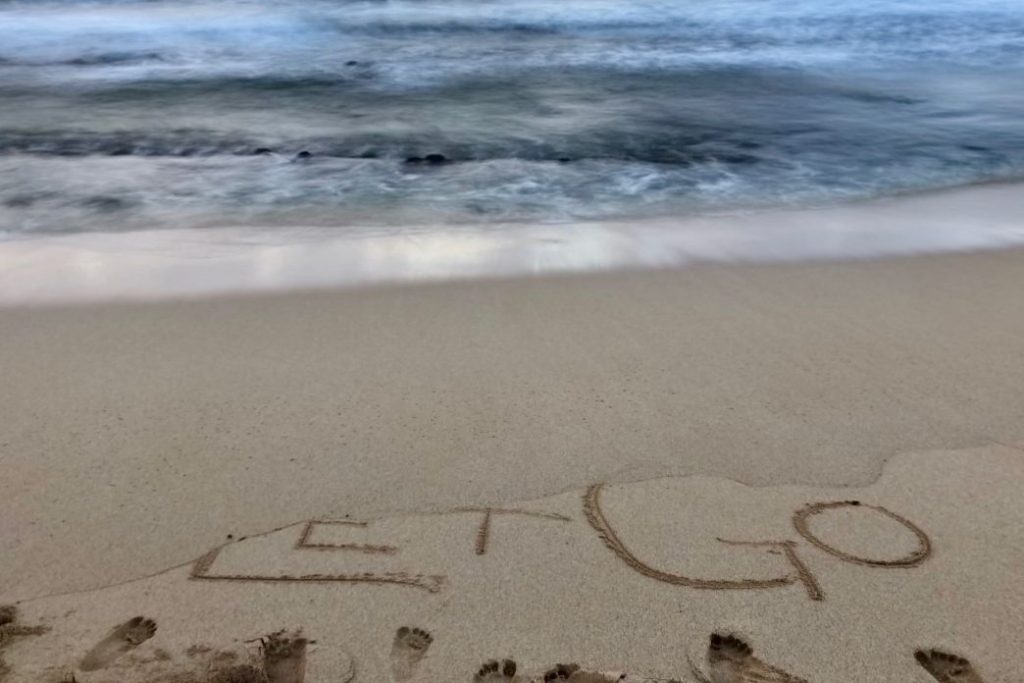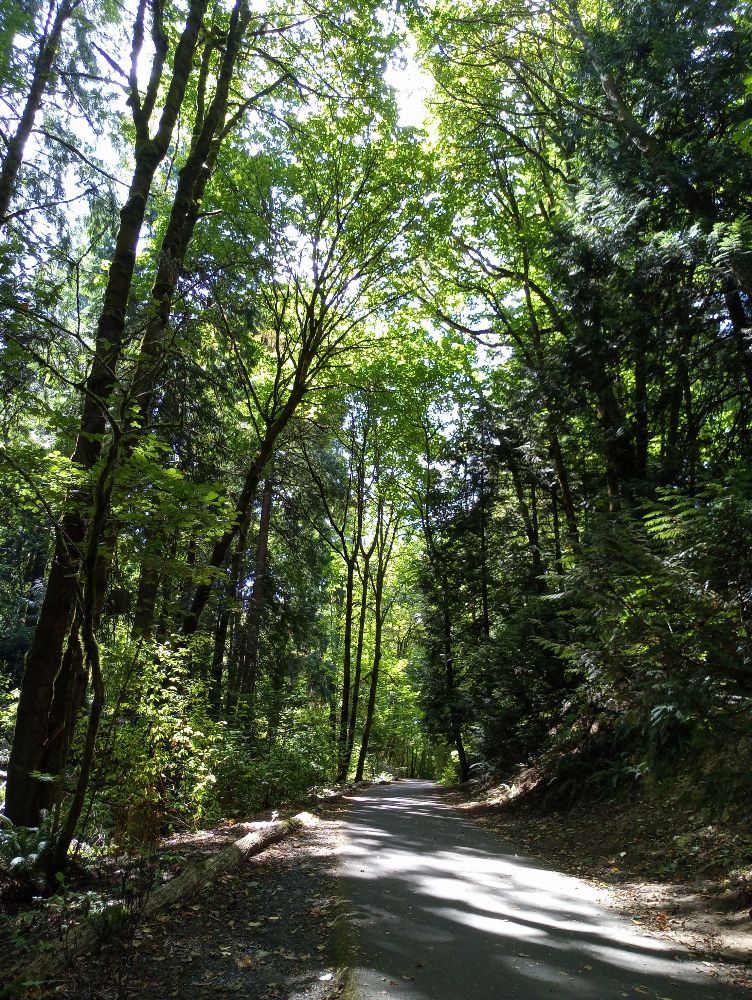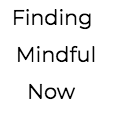
Moment of Mind
Resources for Letting Go
In mindfulness we’re using our attention as a tool to notice our moment to moment lived experience. When we practice it we learn how to develop a relationship with our changing thinking and emotional states. One relationship quality I’m developing is a willingness to release when I catch myself attempting to hold a thought, feeling, or situation.
I am reviewing this year and exploring what I’m letting go of as I move into a new phase of time. The image at the top of this newsletter is a gift from my friend and colleague Naina Saligram (thank you Naina!!). It reminds me of one of my favorite artists, Andy Goldsworthy, who incorporates impermanence and the passage of time in his work (I invite you to watch Rivers and Tides if you haven’t seen it). This theme emerged for me in planning.
Life continues to bring new opportunities at all times, although we may not see them. I invite you to consider all the action that’s happening in the image above:
- The act of listening to what arises in the brain body
- The act of hearing something arising in the brain body
- The act of writing what was heard in the sand
- The act of water washing over sand
- The act of sand moving, resettling
- The act of the writing appearing to be erased
- The act of returning to a blank slate
As I worked through the different planning and visioning guides listed lower down, I realized how much the last few years has been a process of continual releasing as new opportunities have emerged. The biggest thing I seem to be continually letting go of is familiarity intertwined with fear. I know now, after years of therapy and reading about relationships, that what is familiar can be what my brain-body equates as ‘comfort’ even if it means basic needs aren’t met, desires aren’t pursued, and growth isn’t happening. This coping mechanism can be its own stabilizer until further resources become available.
In the last few years I’ve revisited times in my life that I have judged as negative: trauma, losses, injuries, etc. and asked myself – what resources were present that helped me survive and thrive? They must have been there or I wouldn’t be writing this now. And you too have gotten through times of intense pressure and intense fear. You may have created some of your best work or taken action you didn’t know you were capable of during that time, indicating that fear by itself was not a barrier to your creativity or action taking. I invite you to ask what resources are part of what got you to where you are now when things felt challenging?
Resources can be anything, internal or external, that bring comfort or a sense of ease. They can come in the form of people (even strangers), animal allies, ceremonial practices or traditions (creating new ones or reconnecting to ones you had not participated in before), body work, therapy, books/songs/movies, being physically active, taking action on a purpose that pulled at you, indoor or outdoor environments, forms of self-expression even if you were your only audience, leaders even if you don’t know them, classes you took, sleep (naps included), hobbies (i.e. gardening), nutrition, mindfulness or contemplative practice, spiritual practices, objects or belongings, even disconnecting from a situation for awhile, can all support a sense of stability and a calming of the autonomic nervous system.
I invite you to explore past resources as a way to encourage you to notice how frequently they show up, how numerous they are, and how they change in different circumstances. I invite you to explore resources you’ve used in the past, developing new ones, and recognize the ones that are present for you now so you can see the foundation you have for your growth.
I’d love to hear what you notice in these explorations!
Love For Your Inner Science Nerd
S.M.A.R.T. Goals & VISION
I love planning and organizing things. You could say that one resource I have for stabilizing my nervous system is creating order – and since change (or entropy) is a life constant, there is always an opportunity to do this. I’m in the midst of planning for the first quarter of 2020 around two specific goals and developing actions I can take every week. In the world of non-profit program planning the go-to is the concept of S.M.A.R.T. goals. This means goals that are Specific, Measurable, Achievable, Relevant and Time-bound. I’ve used this approach on a variety of projects, and found them…lacking.
So, I revisited goal-making theory (because the nerd in me can’t help it) to be more intentional this time. Turns out there’s a recent study for that! Researchers explored if goals really need to be specific/pragmatic, or if goals that are general/aspirational make a difference to people achieving a New Year’s resolution and sticking with it throughout the year.
Turns out that you want both. When actions are specific, you can easily track progress. However, when you see yourself succeeding this can actually backfire and decrease motivation after you get to that first success. You might play the compensation game with yourself: “well I saved money on that thing so I can spend money on this thing” and then you don’t track those actions and suddenly you aren’t meeting your savings goal.
To build a new habit you not only achieve the initial goal, you also want to continue to take goal-aligned action after you’ve attained it, sustain motivation for it, say no to competing temptations, say no to old behaviors, and spring back from setbacks. This goes beyond willpower and pragmatism.
Enter the aspirational goal – or what I would call a vision. This is about who you are becoming that dovetails, and provides a foundation for, the specific actions you take every day. It’s critical for building a new habit. For example “feeling strong 15 years from now” is a meaningful vision for me. Signing up for a class at the community center is the specific action I take toward being stronger in the short-term, and, when the class ends, I still have that vision to return to. Another aspect the research pointed out is that anticipating having set-backs can help you realize that you can handle it. In fact, our stress recovery systems are built for this, that’s part of the resource that’s built into your brain-body.
Read into the next section if you’re interested in visioning and goal setting resources.
From the Bookshelf: Review of Goal and Visioning Guides
Here are three different resources I found useful for both developing a vision and practical daily actions.
The Compass Year – This free online booklet is useful as a reflection and appreciation practice because it invites you, with open ended questions, to explore the past year first. Then you cast your mind forward about what you want to create in the next.
The 12 Week Year – The second half of this book won’t be new for people who are already solid project managers. What was useful for me was the emphasis on a truly compelling vision that will be stronger than the fear that arises when you step out of what is comfortable/familiar (I realized that I didn’t actually have one for my business before now). And the idea of breaking 12 months into 12 weeks and only focusing on 1-3 goals in each 12 week chunk of time was a new approach for me. I also like the idea presented here that “accountability” is actually ownership of actions.
Finding Your Own North Star – If you’re in a space of wondering about a new phase for your whole life, or a major piece of it, skip the other two and read this one instead. One foundation of this book is the concept of a 4 square change cycle for every life transformation. The author based it off a organizational change research – it applies to people too! The basic premise is that all of us encounter catalytic events that begin to transform our identity and this kicks off a change cycle:
- Death and rebirth – grieving and letting go of the old and opening up to something new
- Dreaming and scheming – listening to new ideas that arise
- The hero’s saga – the nuts-and-bolts of experimenting with action taking (this often takes you back to step 1 again)
- The promised land – you arrive at your goal and tend it
This book also helped me develop a “body compass” (where I use my body sensations to determine what I actually want if my mind is chatting on and on and a pro/con list is not convincing) to support daily decisions as you navigate this change sequence.
If there’s a visioning or goal setting book that you’ve loved and has impacted you, I’d love to hear about it!
Thank you for making time to discover what lights you up, what pulls at you, and learning to notice how you feel. Mindfulness is both a way to expand your awareness and a state of being that arises without effort when we are engaged. Learning to feel your emotions and welcome them is you being inclusive and supportive to your unique internal life experiences. Thank you for prioritizing your well-being as this is how we build a supportive, inclusive world! I appreciate your being here.

Image of pathway looking up toward trees in what is now called Mary S. Young Park on Chinook land in West Linn, OR.
Thank you for making time to discover what lights you up, what pulls at you, and learning to notice how you feel. Mindfulness is both a way to expand your awareness and a state of being that arises without effort when we are engaged. Learning to feel your emotions and welcome them is you being inclusive and supportive to your unique internal life experiences. Thank you for prioritizing your well-being as this is how we build a supportive, inclusive world! I appreciate your being here.
Copyright © 2019, Finding Mindful Now LLC, All rights reserved. www.findingmindfunow.com, originally published on MailChimp with information on current offerings.
